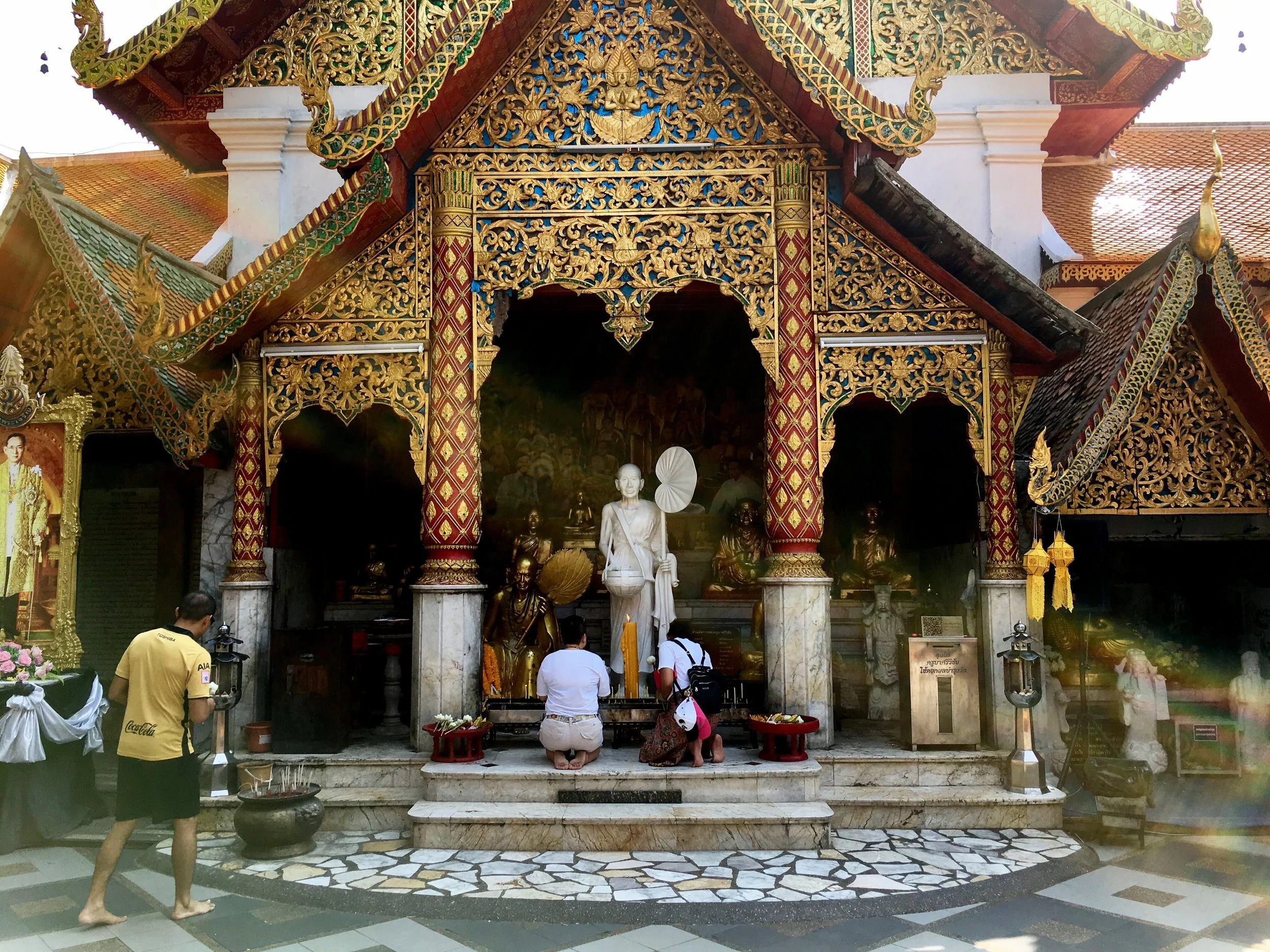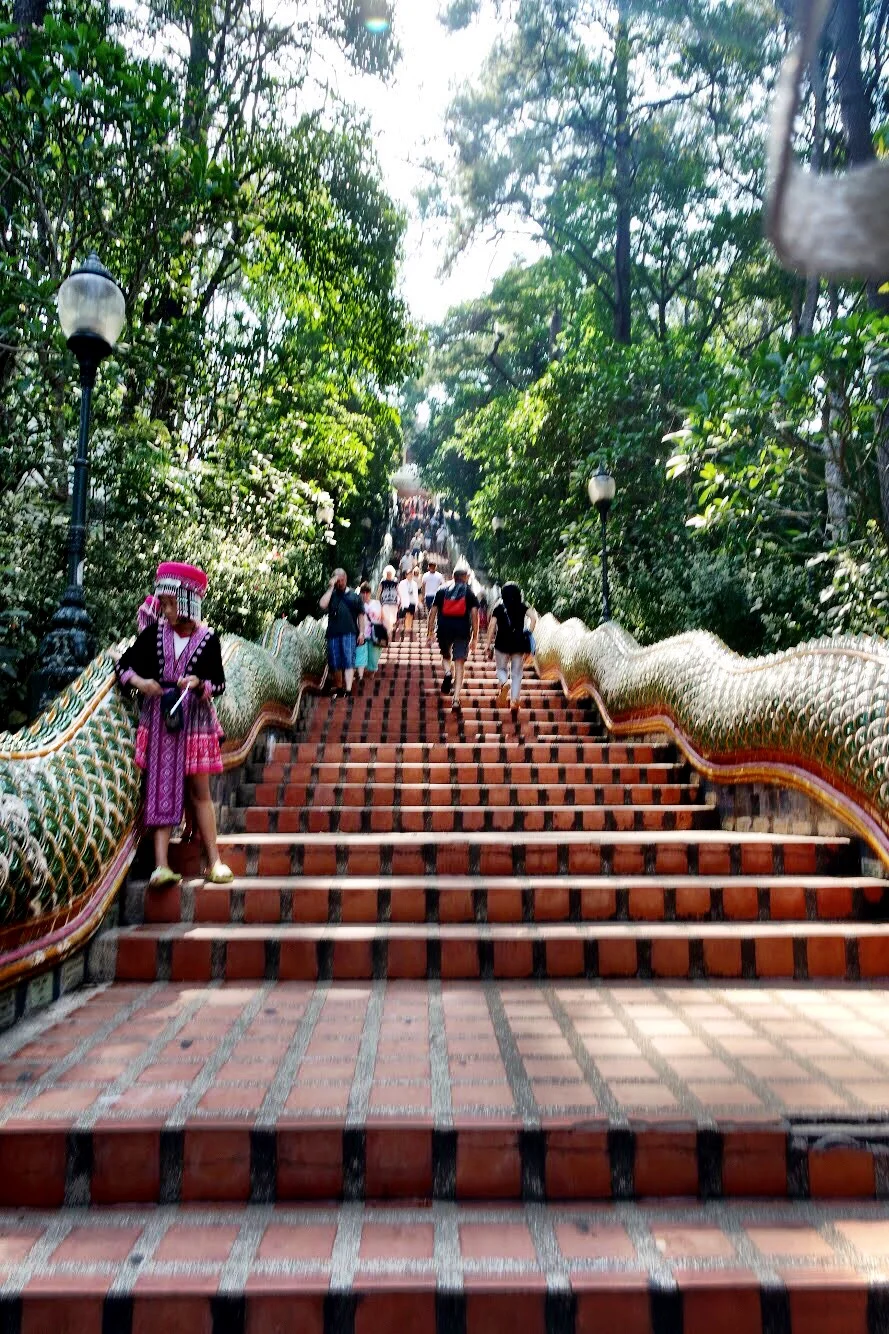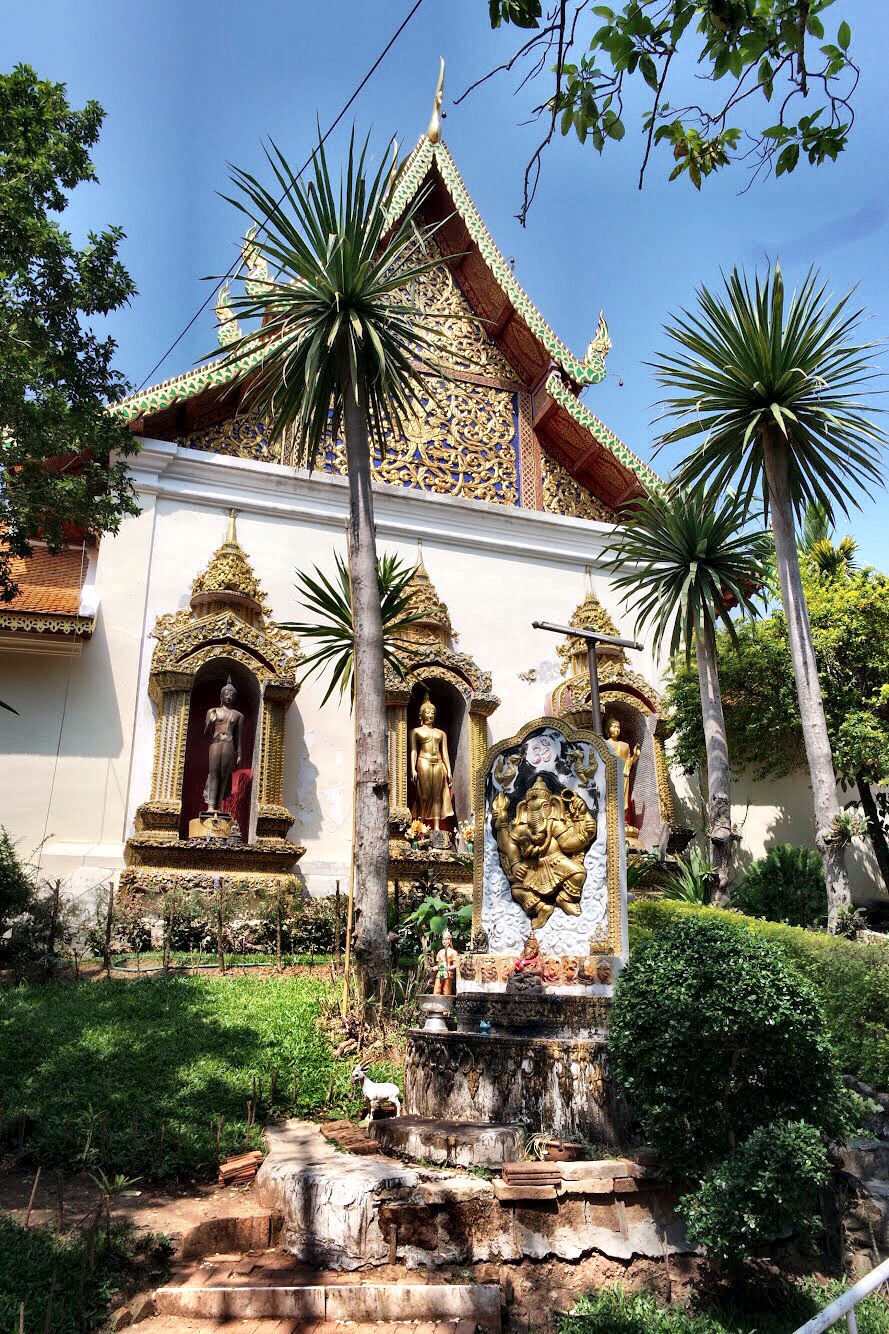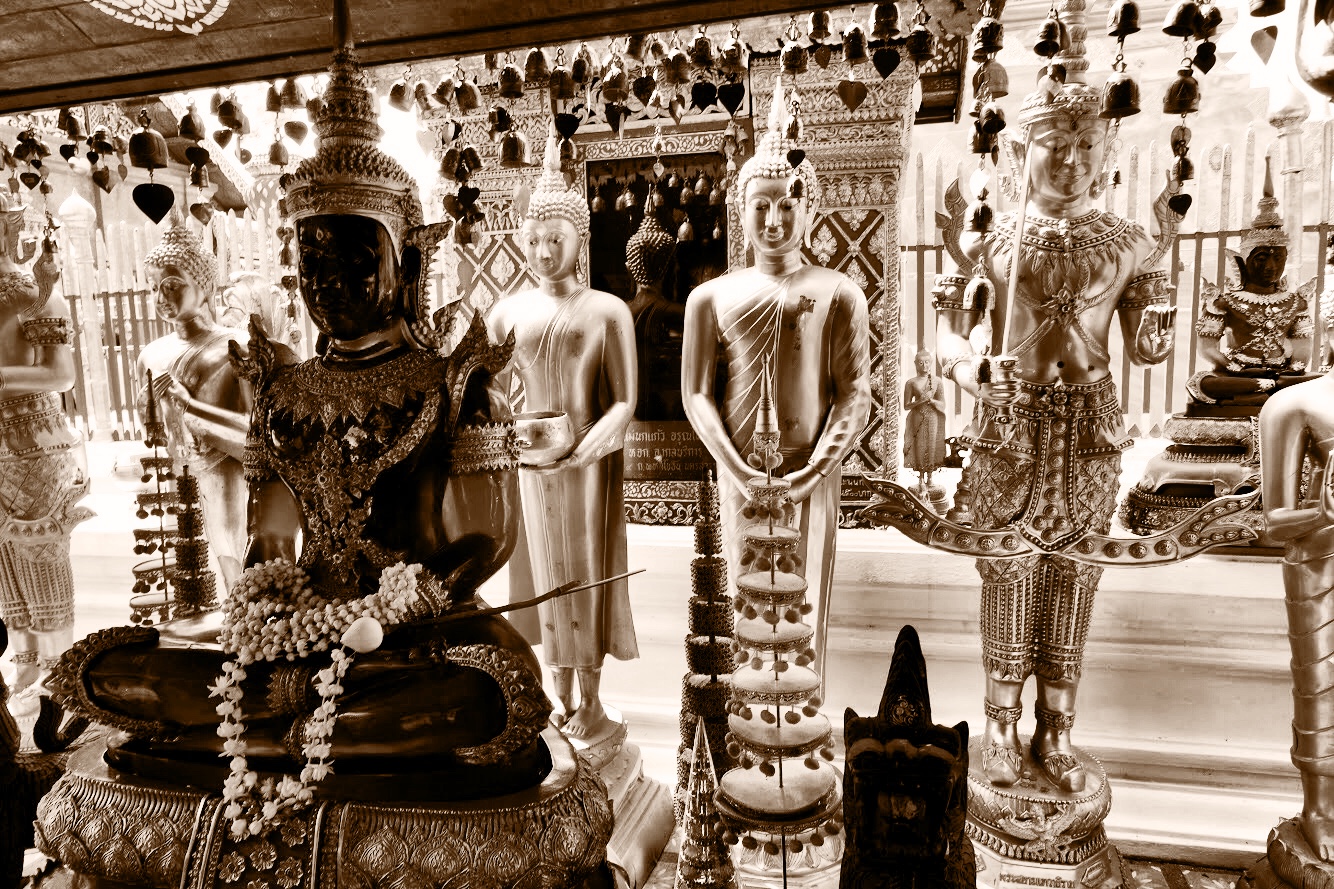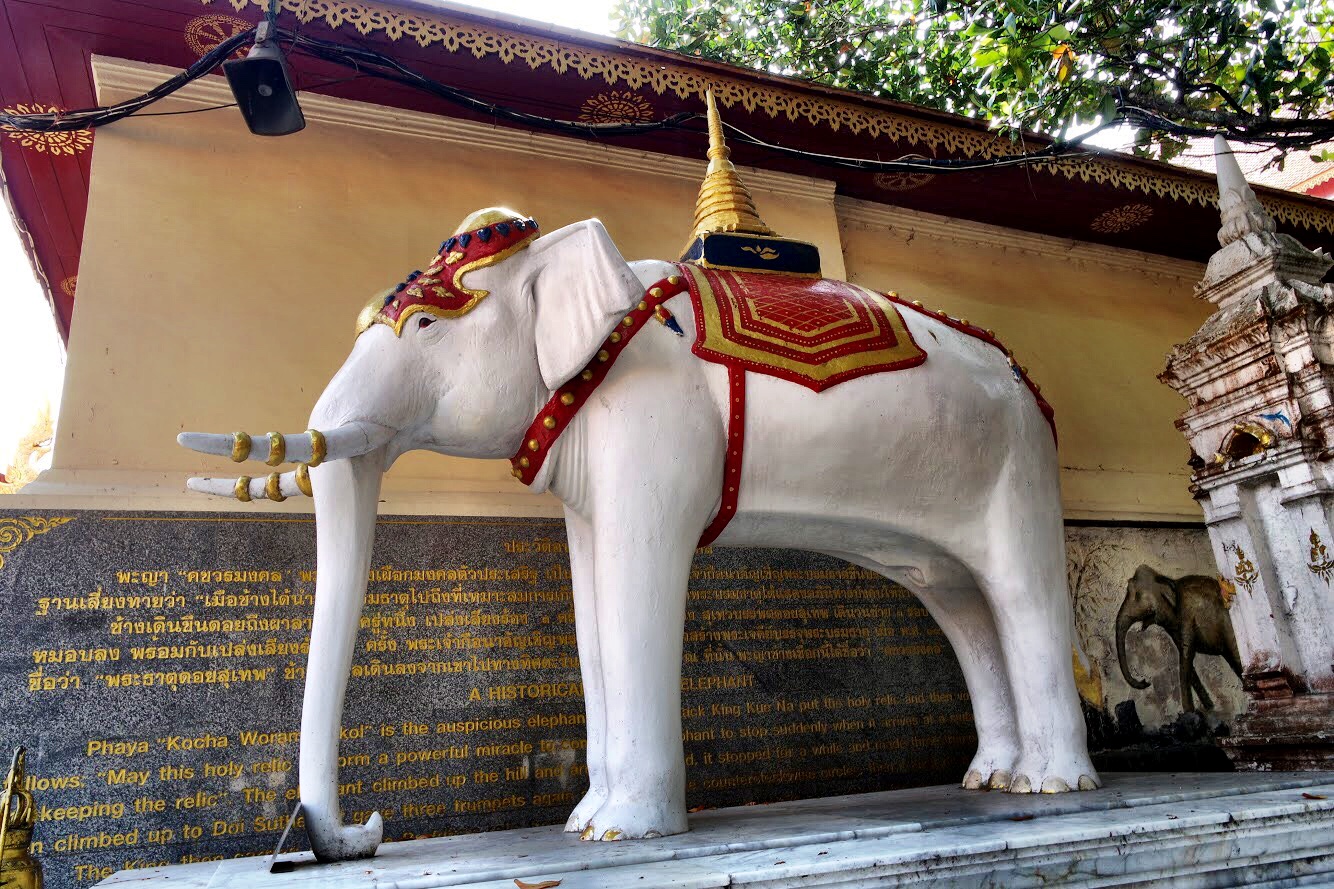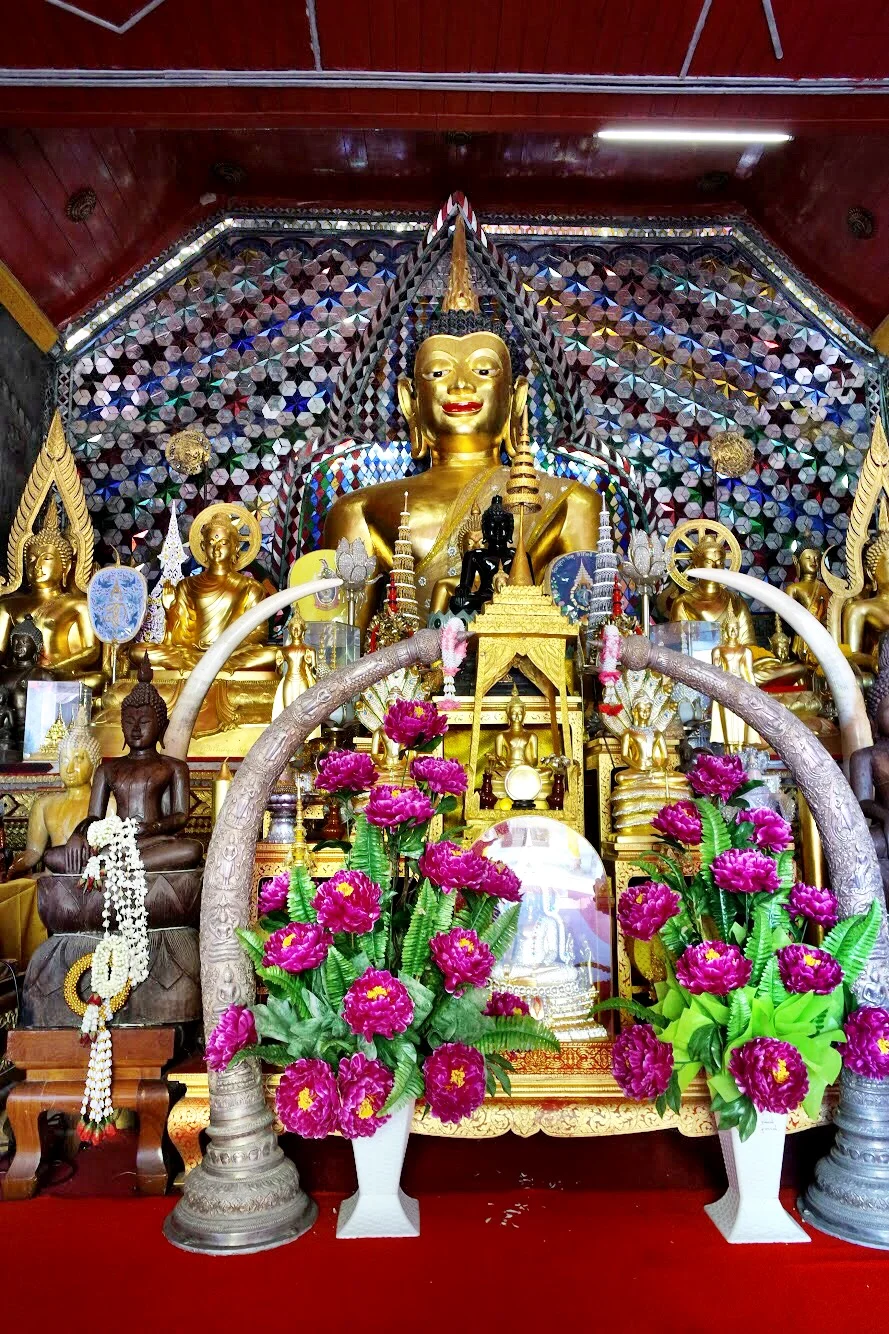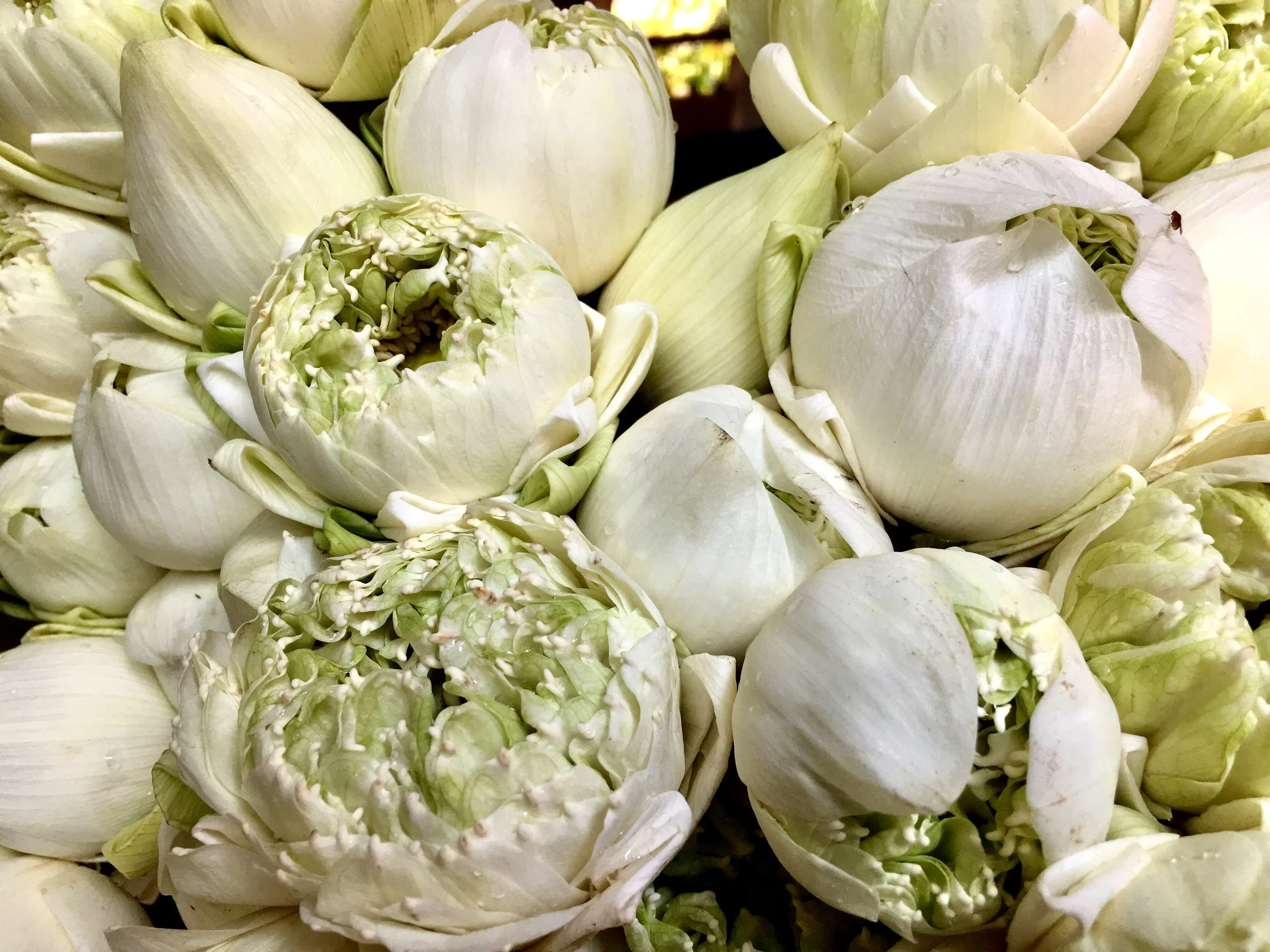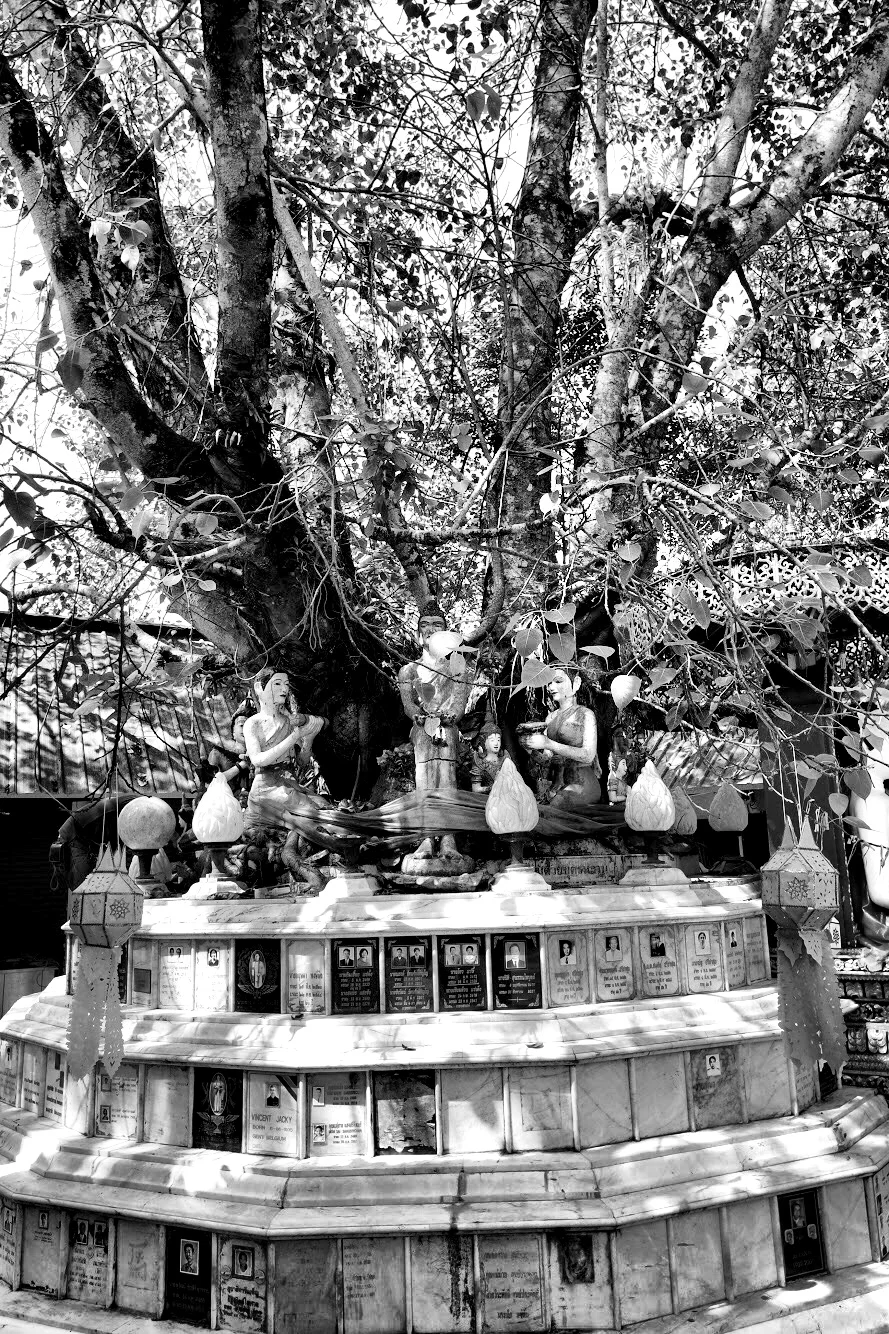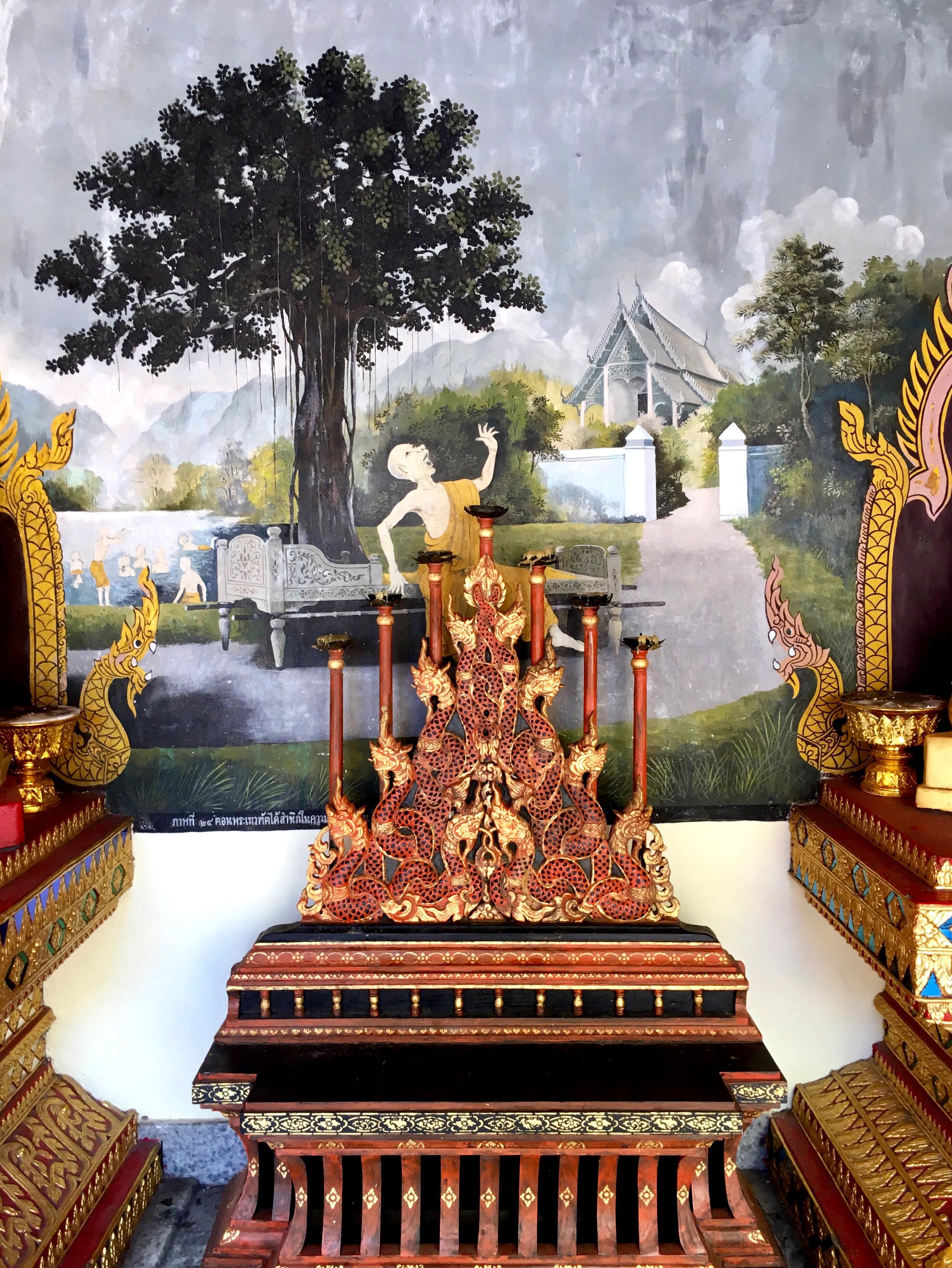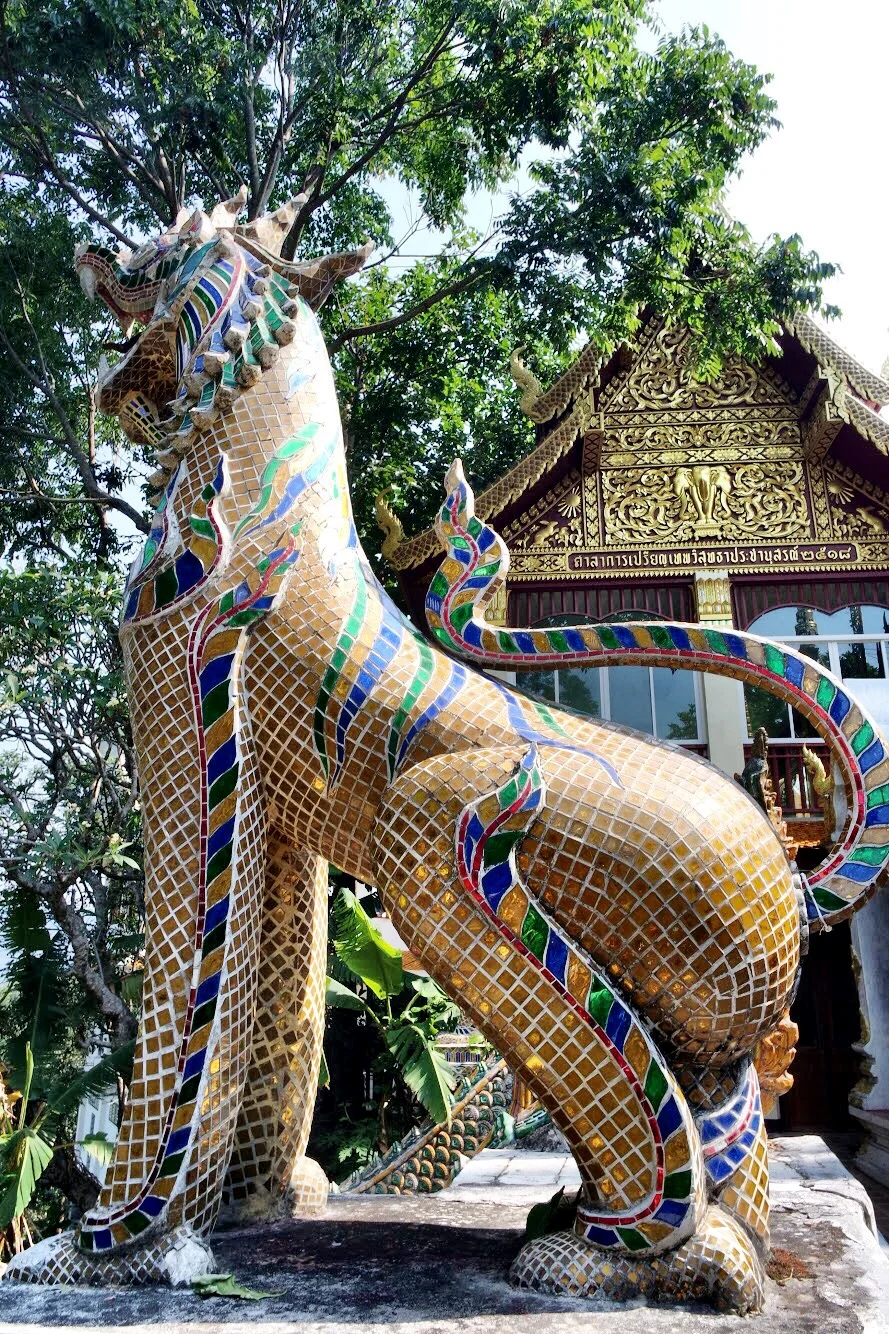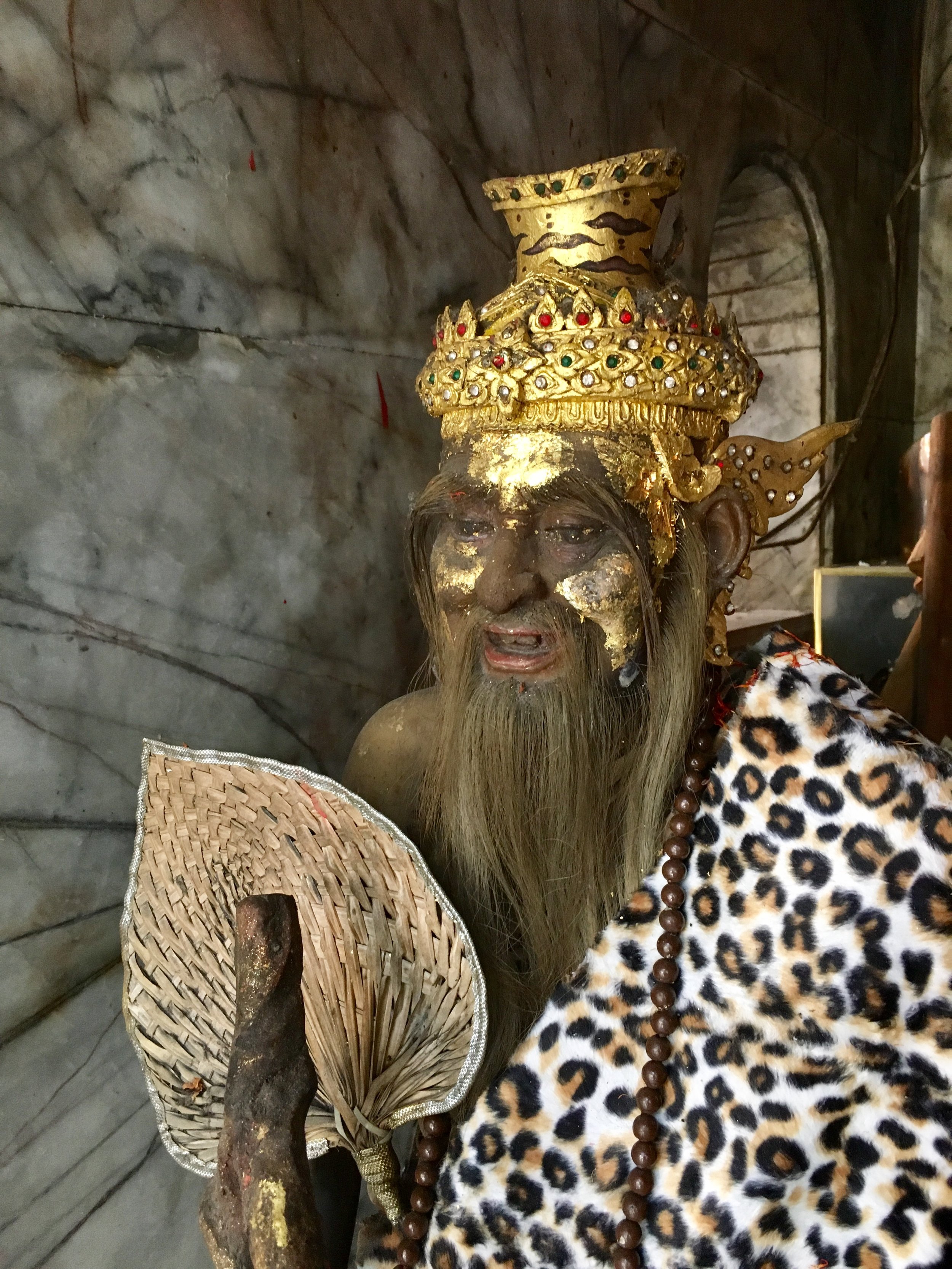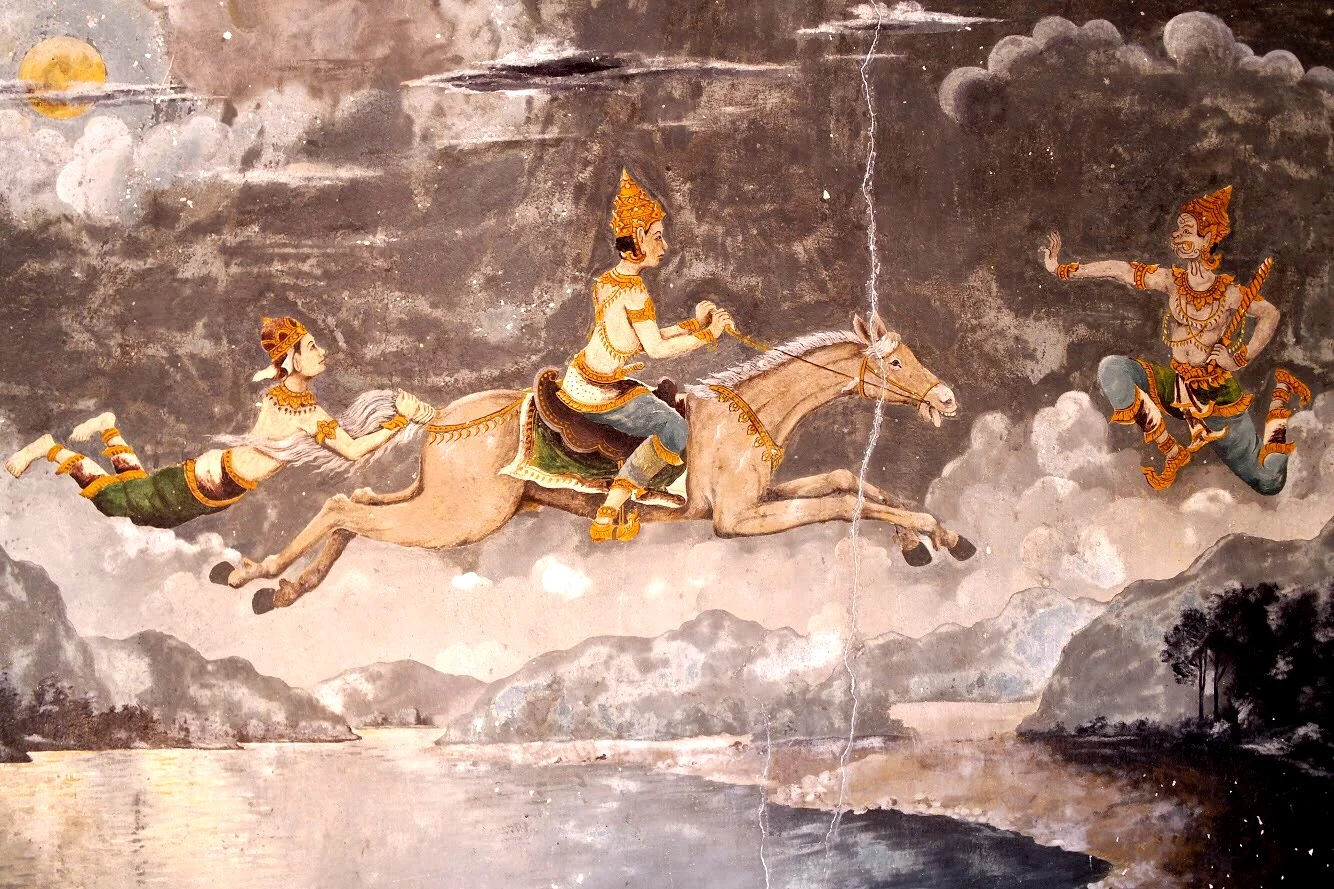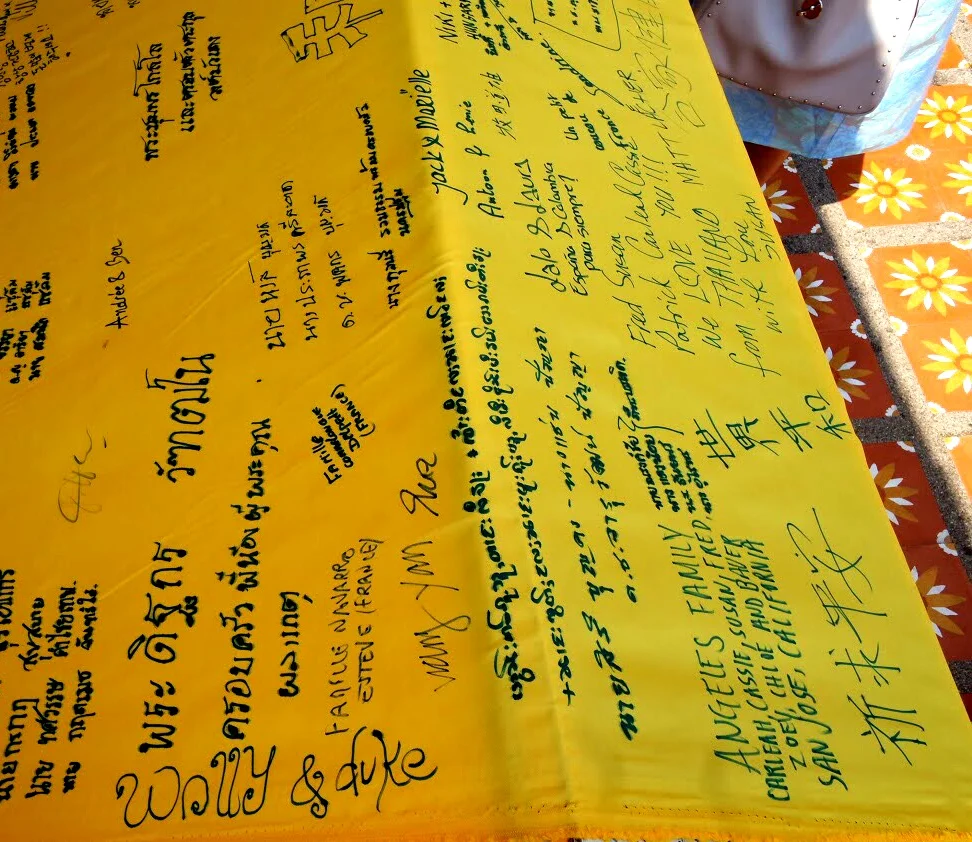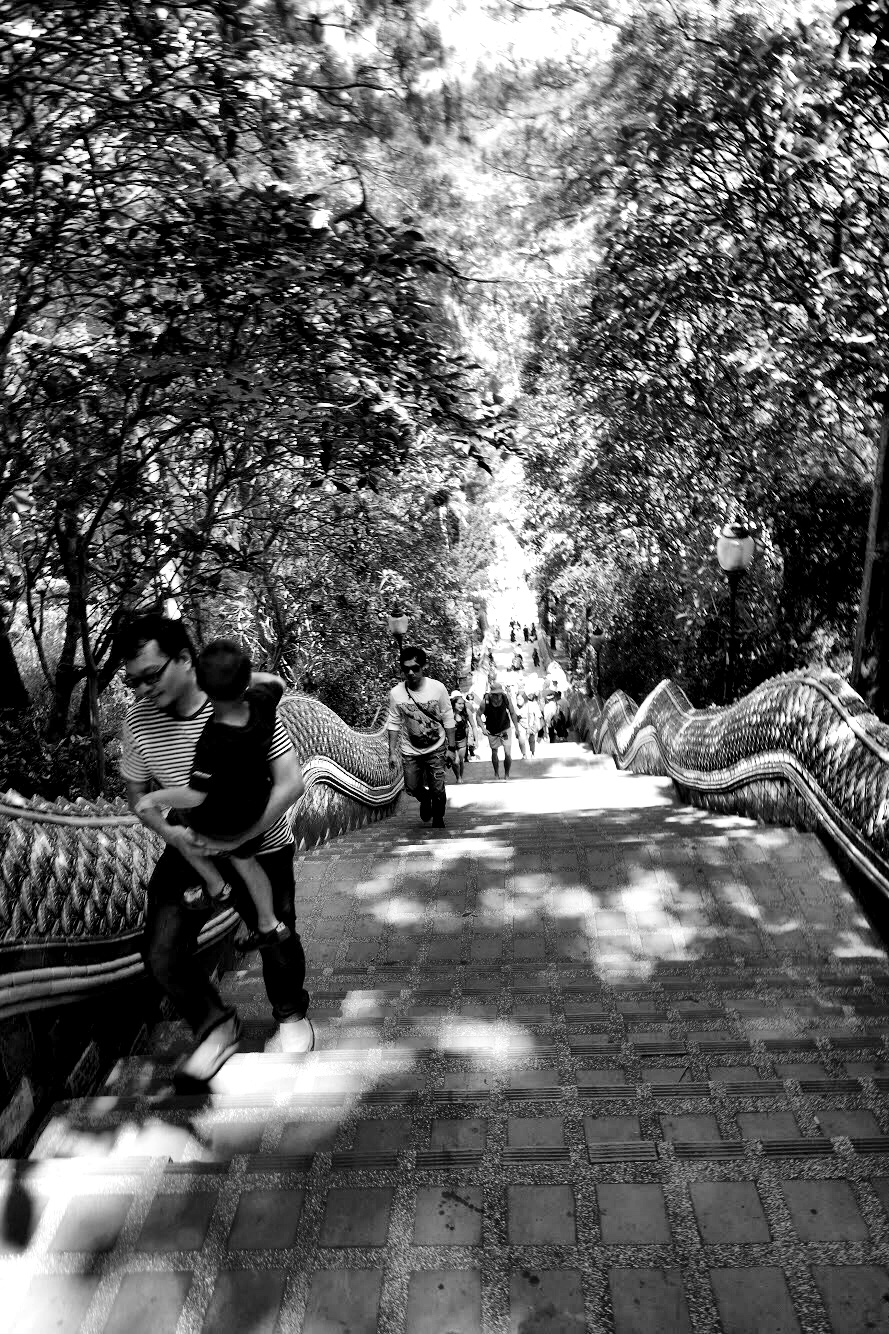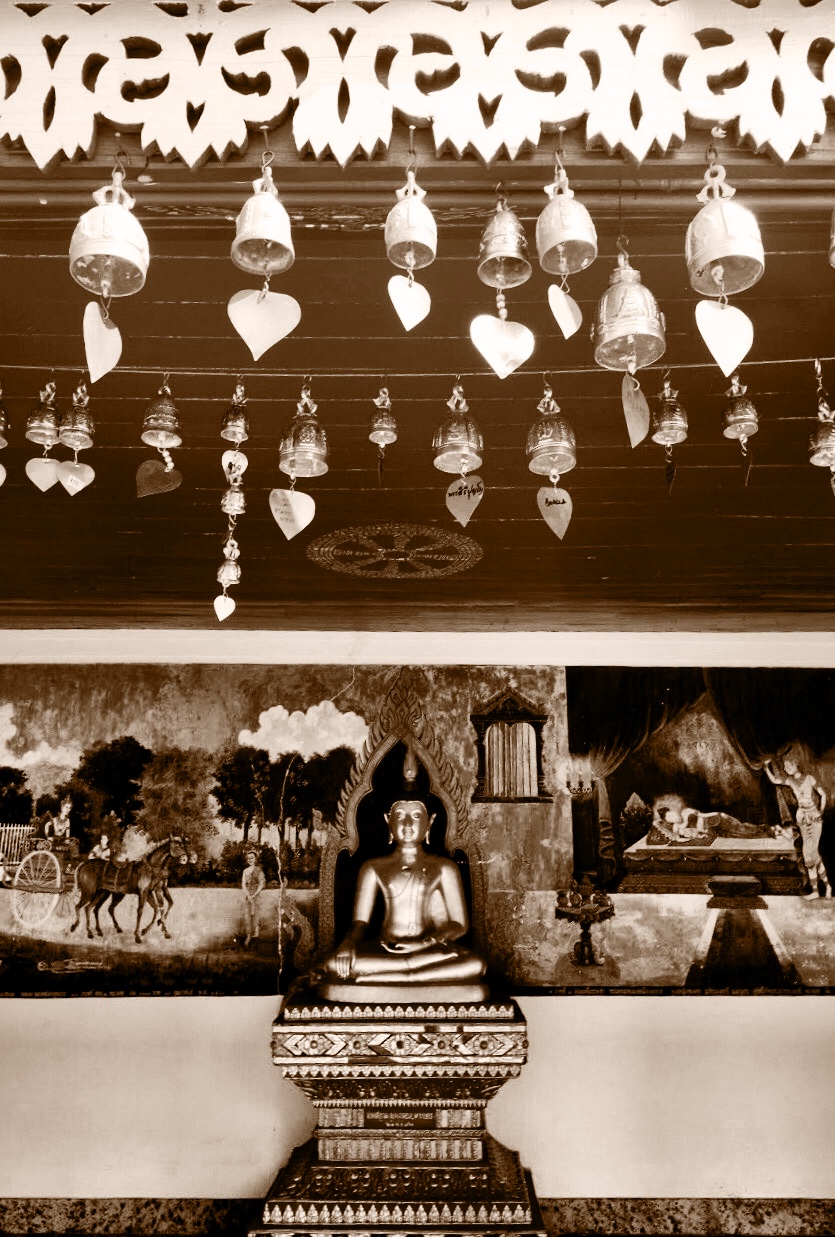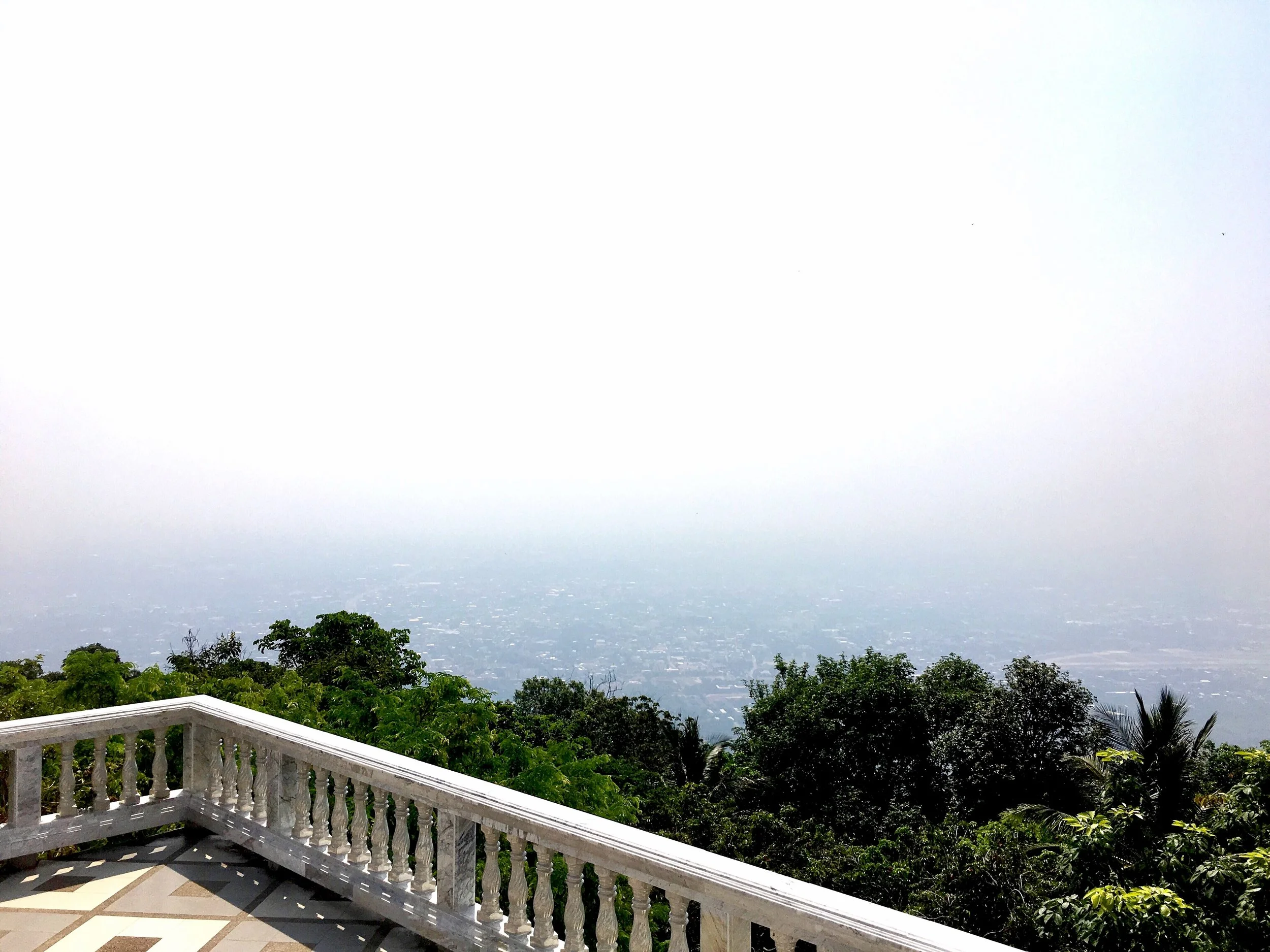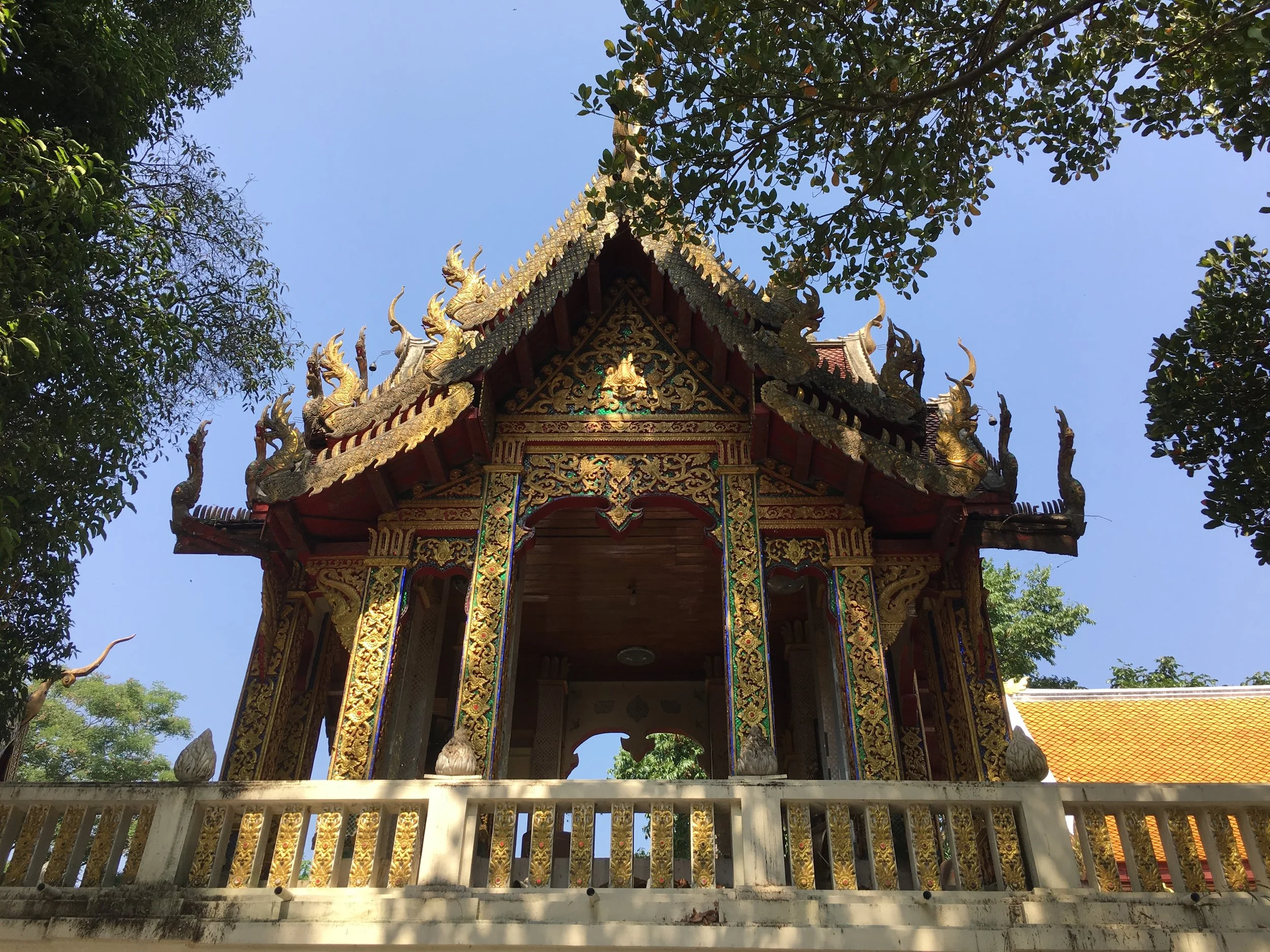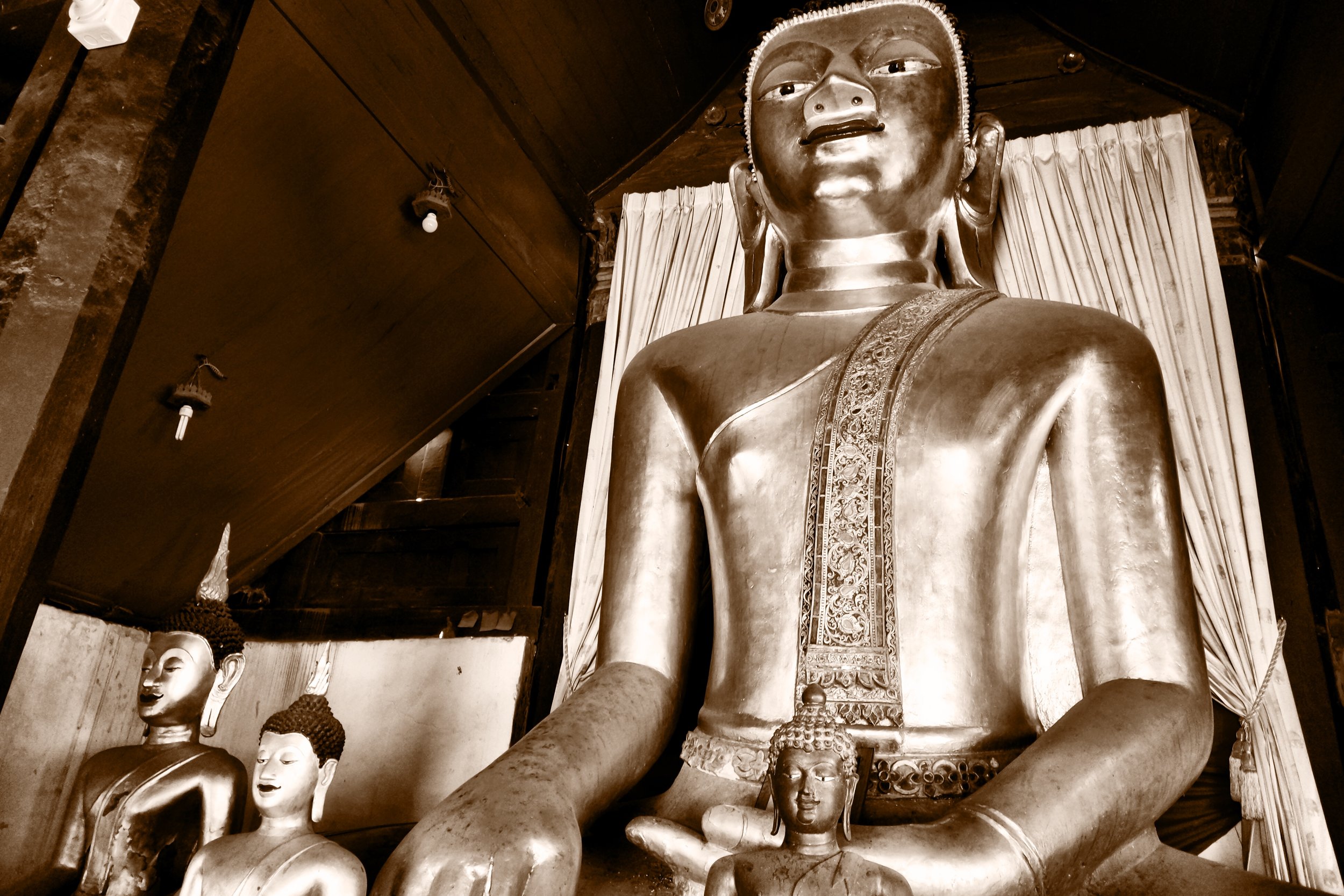Head to the mountains outside Chiang Mai, Thailand to explore a popular temple and get an aerial view of the city.
As with any Thai temple, there’s lots to explore on the Wat Phra That Doi Suthep grounds
The mountain temple of Wat Phra That Doi Suthep is literally the stuff of legends.
Its location was predicated by a dream, a magical relic and the death of an auspicious pachyderm.
“Buddha’s bone shard possesses magical properties: It can make itself invisible. ”
The story goes that a venerated monk named Sumana had a dream in which he was instructed to find a relic of the Gautama Buddha, whose teachings led to the founding of Buddhism. He discovered a fragment of bone from the Buddha’s shoulder among the tall grass at Ban Pang Cha in Chiang Mai Province.
The sheltered Prince Siddhartha Guatama discovers death in this mural at the temple. He went on to become the Buddha, and part of his magic shoulder bone is enshrined here
The bone shard possesses magical properties: It can make itself invisible, and at the temple of Wat Suan Dok, it miraculously split into two pieces. It was considered bad luck to enshrine both pieces at the same site, but no one knew where to put the other half. The problem was solved in an unusual manner: The larger half of the relic was placed on the back of a chang samkhan, a holy elephant, called “white” because these pinkish albino versions are thought to be especially pure.
The elephant was allowed to roam freely. It climbed to the top of Mount Doi Suthep, where it trumpeted three times before it knelt down and died.
King Kuena, the sixth ruler of the Lanna Kingdom, declared the spot a holy site, and work commenced in 1383 to erect a chedi, or domed tower, to hold the relic. Wat Phra That Doi Suthep was born.
Buddhas galore at Doi Suthep
Temple on the Mountain
The 14th century Buddhist temple and pilgrimage site, known locally as Wat Doi Suthep (and pronounced “Doy Soo-tep”) is located within Doi Suthep-Pui National Park, about 40 minutes outside of Chiang Mai. To reach the wat, Wally and I hired a driver from our hotel (Tommy, whom you can reach via email: t.tommy2556@gmail.com). As he drove us along, he told us about the paved road that winds its way up the mountainside. In 1935, the road was constructed entirely by the voluntary labor of the followers of Kruba Srivichai, known as the Buddhist Saint of Northern Thailand. The project gained such exposure that it attracted donations of 20 million baht and, even though the workers used mostly primitive tools, it was completed after only six months.
The lengthy staircase at Doi Suthep has railings that slither upwards in the shape of snakelike nagas
We heard there’s a funicular that will take you up to the temple if you don’t want to deal with these stairs
The wat is reached via a 306-step staircase flanked by an undulating naga balustrade. The ascent is intended to help devotees attain merit, the accumulation of good deeds in Buddhism.
If you want to take pictures of the kids in traditional hill tribe garb, be prepared to pay
Sometimes you can catch the hill tribe children “off duty,” playing games instead of begging money for photographs
As you climb the stairs, you’ll encounter small groups of young kids, mostly girls, in colorful hill tribe dress. To earn money from tourists, they will ask for a tip if they catch you taking photographs of them. I can’t imagine that it’s a fun way to live, but it was nice to catch a glimpse of them playing games and just being kids when they didn’t know they were being watched.
Entry to Wat Doi Suthep is 30 baht for foreigners and free for Thais. If you wish to take the funicular cable car instead of climbing the stairs, the ride is 20฿ round trip or 10฿ one way.
Offering candles for the various poses of the Buddha, representing the different days of the week
We visited early in the morning, before the throngs of tourists arrived, giving us the freedom to explore without large crowds.
This image of the Buddha at Wat Doi Supthep is covered in gold leaf
When Wally and I reached the top of the steps, we were greeted by two giant green yaksha guardians.
A statue of the white elephant with a golden ku, a reliquary for a Buddha image resembling a miniature chedi, on its back, stands immediately to the left. There’s a plaque telling the story of the temple behind it.
A shrine to Sudeva, the hermit who was living on the site at the time when the white elephant transported the famous relic, sits to the right. The leopard-print cloth draped around his body is symbolic of the animal skins traditionally worn by hermits in India and beyond.
A shrine to Sudeva the hermit wears a leopard-print cloth and has some rather realistic-looking hair
The sun’s intense heat washed over the tiled central courtyard as we entered the plaza containing the shimmering copper-gilded chedi. Fortunately, we were able to take shelter and meander amongst the shaded arcade, which is home to a variety of different Buddha images. The murals covering the walls behind them illustrate the founding of the wat.
The structure in the middle is called a chedi. This one is covered with thin sheets of copper and houses part of the Buddha’s shoulder bone. If you don’t see it, that’s because it can turn invisible
Because the chedi contains a sacred relic, there are separate lines for men and women. The base is enclosed by a railing to guide ritual circumambulation and, supposedly to maintain its sanctity, only men are allowed inside the innermost railing. (Thais have a warped idea that women are unclean. Read more about Thai Buddhism — the good and the bad — here.)
Out back, we paused to take in the view. Seen from Doi Suthep, the horizon becomes a vast hazy line of dense foliage stretching out far into the distance like an endless sea of green briefly interrupted by the surprisingly small city of Chiang Mai.
Several souvenir shops are located to the left of the base of the stairs, many with similar items. Don’t be afraid to compare and be prepared to bargain. We saw a wooden monk puppet we really liked and asked the first seller how much it was. She told us 200 baht, or about $6.
We moved on, and every stall we stopped at quoted a higher and higher price — 400฿, 600฿, 900฿.
So we ended up going back to the first woman. In fact, she was so reasonable, we didn’t really even have to negotiate — and we ended up spending about a hundred bucks at her stall. She even threw in some stuff for free. Good karma.
A stall where worshippers can buy flowers for offerings from a Buddhist nun (they’re much less common than monks)
As we waited at the bottom of the stairs for Tommy to get the car, the shopkeeper came running over to us. She was waving around a stick — part of a larger monk puppet we purchased from her — that she had forgotten to give us. We smiled and thanked her, sure that her good deed earned her some merit at this sacred site. –Duke
Wat Phra That Doi Suthep
Wat Phra That Doi Suthep Road
Srivijaya Suthep Mueang Chiang Mai District
Chiang Mai, Thailand
